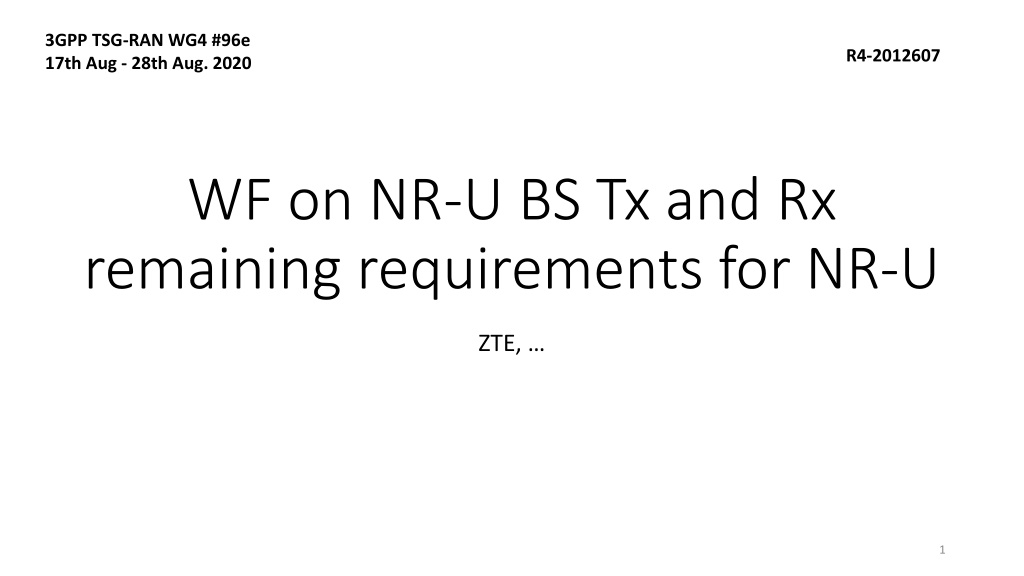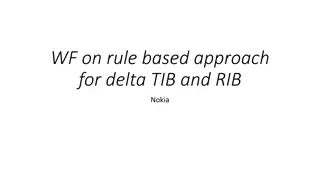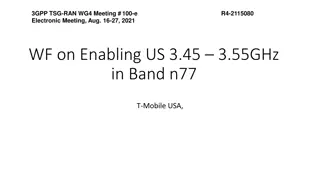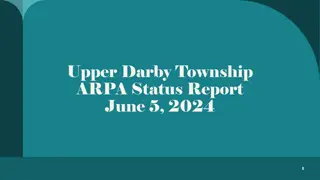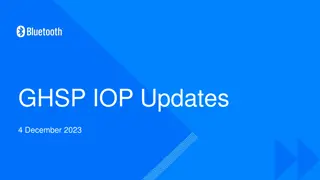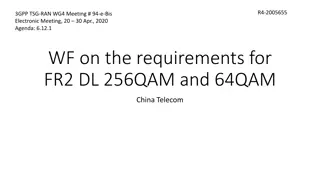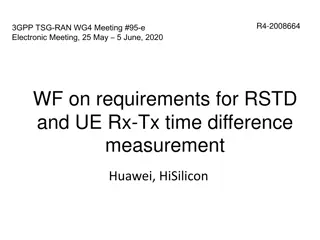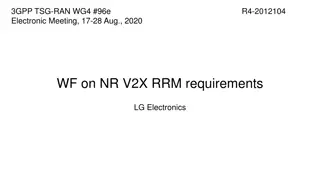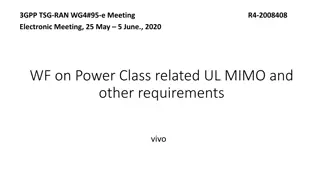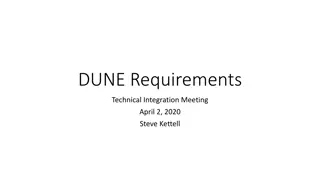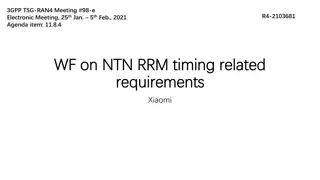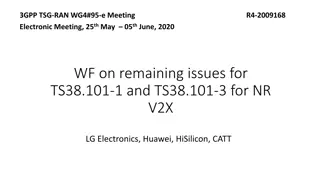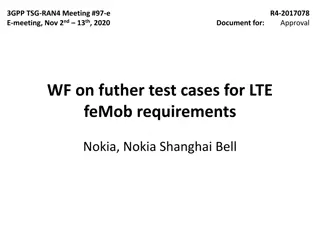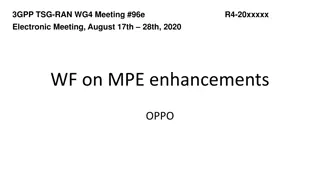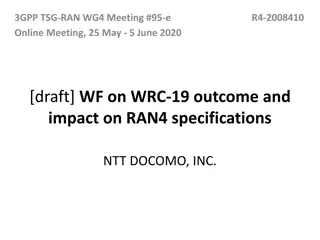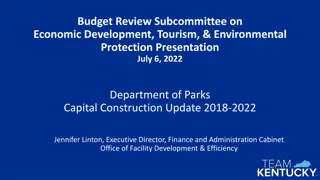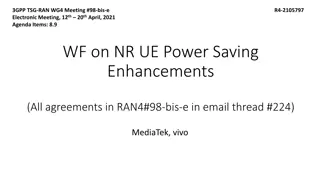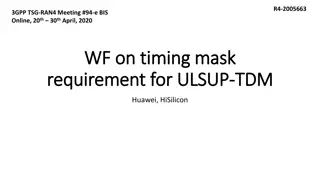Remaining Requirements for NR-U BS Type 1-C and 1-H in RAN4 #96e Meeting
In the RAN4 #96e meeting, open issues related to NR-U BS requirements were discussed, including support for AAS BS type, IBB/OOBB requirements, frequency offset for interfering signals, and LO leakage exception for NR-U BS Tx. Proposals were made and agreements reached regarding frequency offsets for ACS and IMD interfering signals. The WF for fOBUE and fOOBB for NR-U BS Type 1-C and 1-H in n46 were also reviewed, with recommendations for legacy LTE/LAA and NR values. Additionally, previous discussions on in-band and out-of-band boundaries for AAS and NR were referenced.
Download Presentation

Please find below an Image/Link to download the presentation.
The content on the website is provided AS IS for your information and personal use only. It may not be sold, licensed, or shared on other websites without obtaining consent from the author. Download presentation by click this link. If you encounter any issues during the download, it is possible that the publisher has removed the file from their server.
E N D
Presentation Transcript
3GPP TSG-RAN WG4 #96e 17th Aug - 28th Aug. 2020 R4-2012607 WF on NR-U BS Tx and Rx remaining requirements for NR-U ZTE, 1
Background In RAN4#96e,open issues are identified for NR-U BS requirements which needs further discussion, open issues are listed as following: 1) How to reflect NR-U BS to support AAS BS type; 2) IBB/OOBB requirements for NR-U BS; 3) fOBUEand fOOBB for NR-U BS type 1-C and 1-H; 4) Frequency offset of interferer signal for RX ACS and IMD requirements; 5) LO leakage exception for NR-U BS Tx Note : 1) and 4) has been resolved in the GTW meeting with following agreement: Proposal 1: Prated,C,AC used in WF [4] and CR [3] should be updated as Prated,x; Proposal 1: to use the following frequency offset for ACS interfering signal in Table 7.4.1.2-2a in R4- 2010960; Proposal 4: to use the following frequency offset for RX IMD interfering signal in Table 7.7.2-2a in R4- 2010960; Reference: [1]R4-2010738, CR to TS 38.104: Introduction of NR-U into BS core specification,Nokia [2]R4-2010743, Discussion on BS core specification drafting ,Nokia [3]R4-2010959,NR-U BS Tx requirements, ZTE Corporation [4]R4-2010960, NR-U BS Rx ACS, IBB, OOBB, IMD requirements, ZTE Corporation [5]R4-2010495 [6] R4-1902505, WF on NR-U BS RF requirements, Nokia, Nokia Shanghai Bell 2
Background As a reminder in-band and out-of-band boundary was discussed some time ago in RAN4 when AAS and NR was introducing and agreed in [1]. Main motivation to introduce wider boundary was that for antenna arrays in which antenna and radio are closely integrated and there are a potentially large number of transmitters, the amount of space for integrating filters is limited. It should be noted that that time boundary was discussed for all bands except Band 46. Also that time there was no NR-U. From [1]: [1] R4-1711779, WF on in-band and out-of-band boundary, NTT DOCOMO, INC., Nokia, Ericsson, Huawei, ZTE 3
WF for fOBUEand fOOBB For NR-U BS type 1-C for n46 NR-BS Type 1-C fOBUE fOOBB Supporting companies Option 1 (legacy LTE/LAA values) 10MHz 20MHz ZTE, Ericsson Option 2 (legacy NR values) 40MHz 60MHz Huawei, Nokia Recommend Agreement: option 1 For NR-U BS type 1-H for n46 : fOBUE fOOBB Supporting companies Option 1 (legacy LTE/LAA values) 10MHz 20MHz Option 2 (legacy NR values) 40MHz 60MHz ZTE, Huawei, Nokia Recommend Agreement: option 2 4
IBB and OOBB requirements For NR-U BS type 1-C and 1-H for n46: NR-BS Type 1-C General blocking requirement Supporting companies Option 1 To reuse LTE/LAA requirement ZTE Option 2 To reuse NR requirement Nokia Recommend Agreement: NR-BS Type 1-H General blocking requirement Supporting companies Option 1 To reuse LTE/LAA requirement ZTE Option 2 To reuse NR requirement Nokia Recommend Agreement: Note: for background for eLAA BS RX requirement could be found in the following R4-167192, R4-166293. 5
LO leakage for NR-U punctured channels An exception to the spectrum emission requirements for the non-transmitted 20 MHz channels allows a single 2 MHz bandwidth to extend to Prated,x-28dB , or -20 dBm, whichever is the greatest. Option 1: to define LO leakage exception Nokia, Huawei Option 2: not to define LO leakage exception ZTE Note :To define LO leakage exception will degrade the UE performance Note: LO leakage exception is defined also in UE specification. 6
